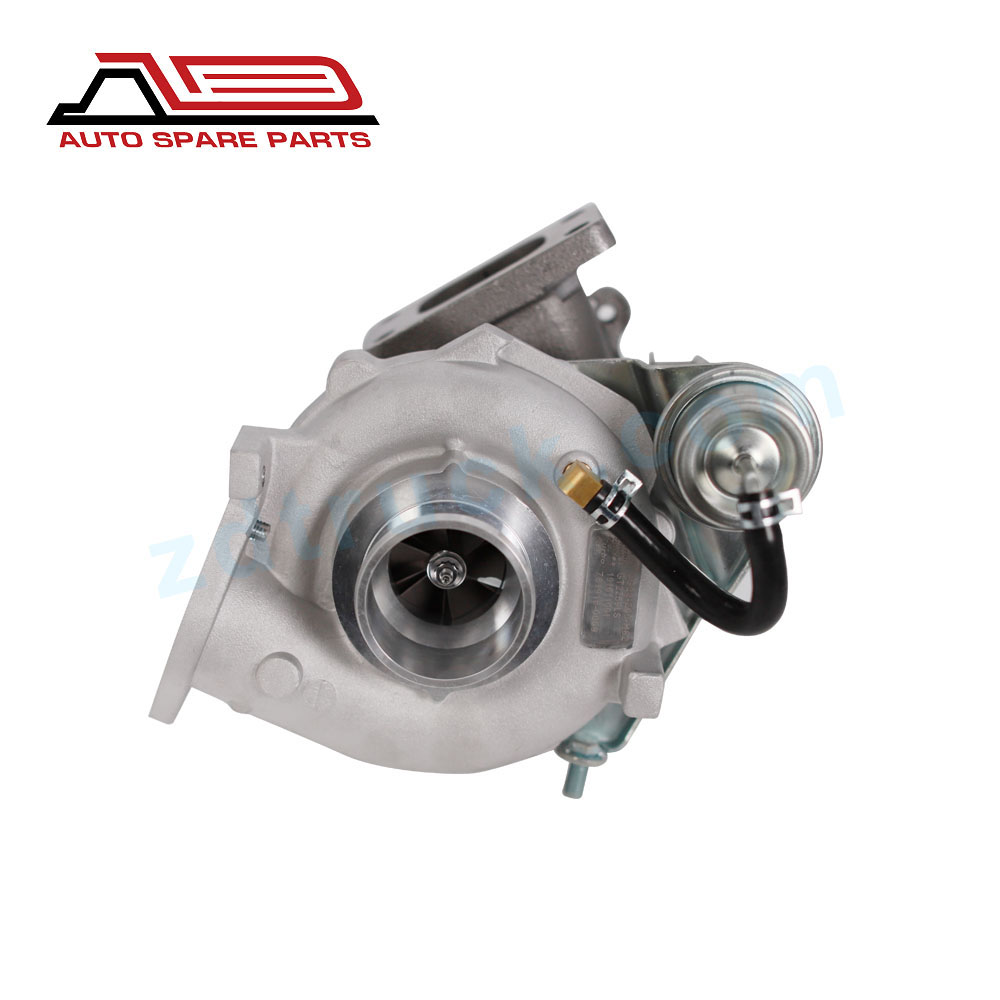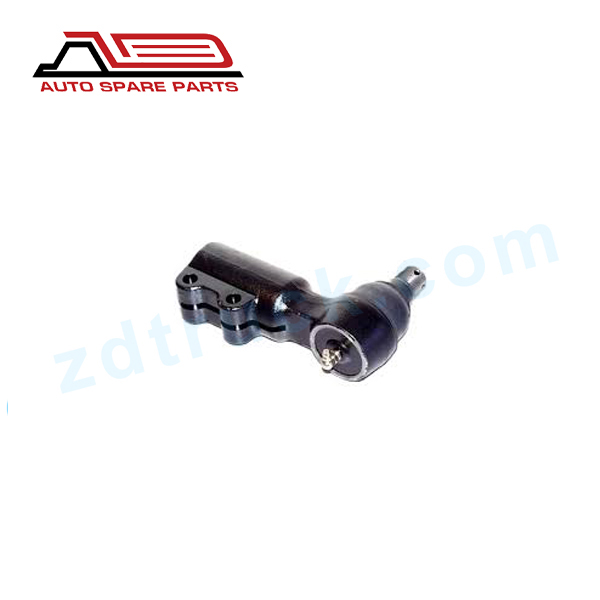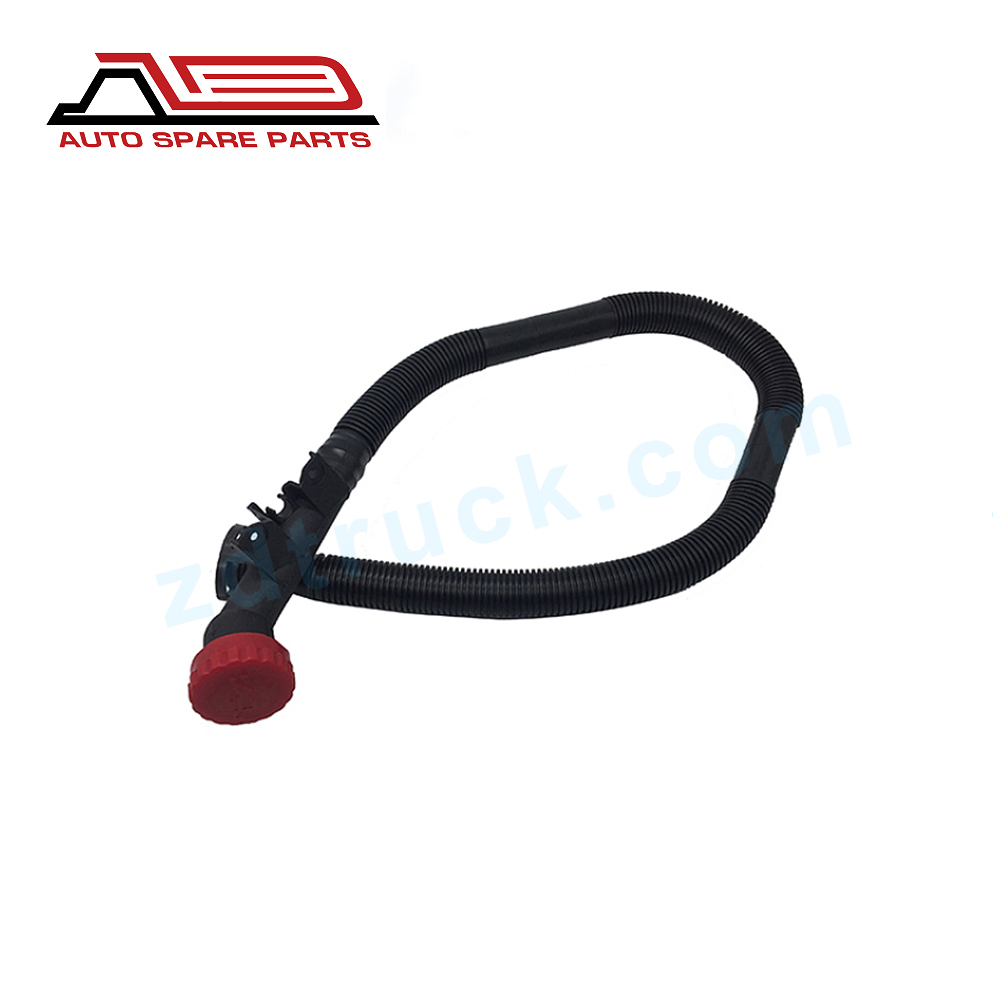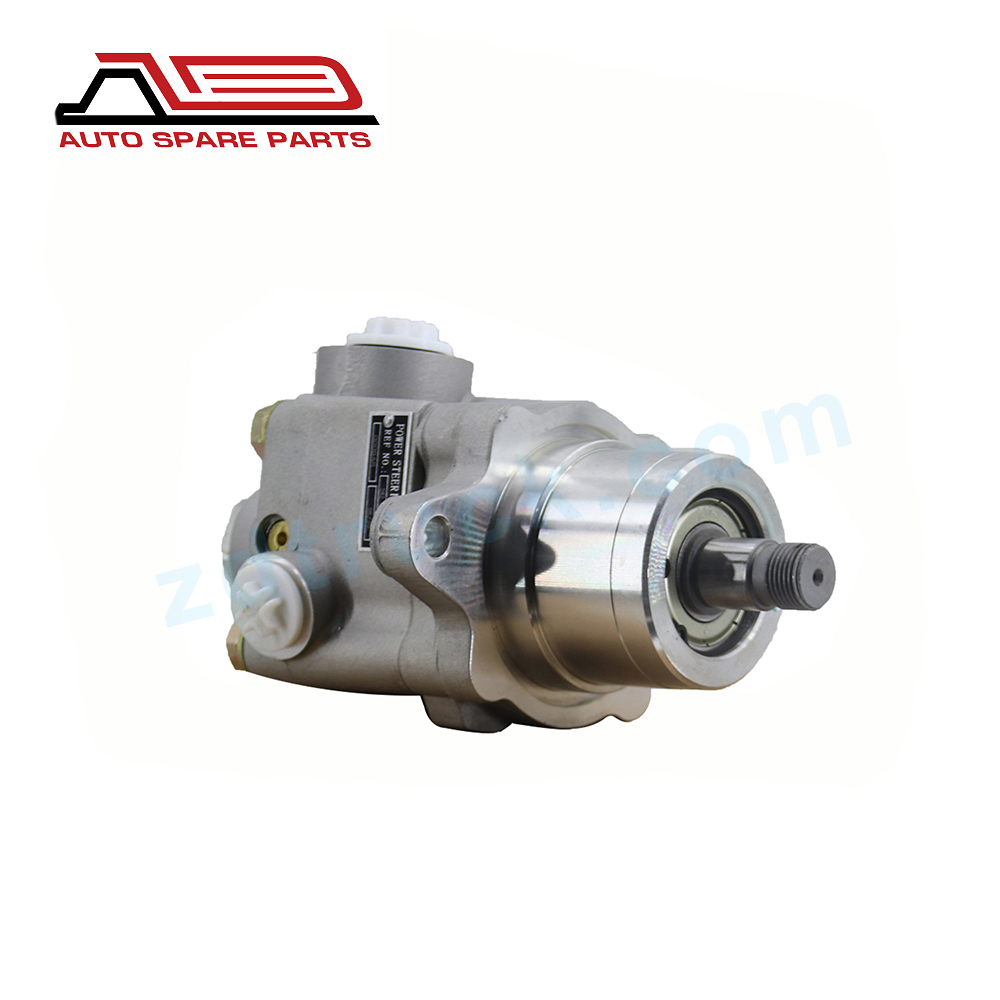Good Wholesale Vendors Clutch Pressure Plate - GT2259LS turbo 761916-0009 761916-0010 787873-0001 244000494C 24100-4631 turbo for Hino J05E-TA engine – ZODI Auto Spare Parts
Good Wholesale Vendors Clutch Pressure Plate - GT2259LS turbo 761916-0009 761916-0010 787873-0001 244000494C 24100-4631 turbo for Hino J05E-TA engine – ZODI Auto Spare Parts Detail:
GT2259LS turbo 761916-0009 761916-0010 787873-0001 244000494C 24100-4631 turbo for Hino J05E-TA engine
| Item name | Turbocharger |
| Part number | 761916-0003,24100-4631 |
| OE NUMBER | 761916-0003, 761916-3, 761916-0006, 761916-0007, 761916-0008, 761916-0009, 761916-0010,787873-0001,244000494C, 241004631, 24100-4631 |
| Engine | J05E |
| Model | GT2259LS |
| Fuel | Diesel |
| V-spec | |
| Displacement | 5.3L, 5300 ccm, 4 Cylinders |
FAQ
Q1. What is the advantage of our company?
A.10 Years experience Expert in Turbo industry Product range covers Turbine shaft, Compressor wheel, core, Turbochargers.
Prompt and professional service Price offer within 24 hours Manual production machines and production line to make sure your quality.
Q2. How we can get a quote ?
A.Pls email Jack Tang.
Q3. Can you produce any type we need?
A.Yes, Give us the type of product you need, We will supply the products you need.
Q4. What’s the delivery time?
A.25-45days.
Q5. What is the payment term?
A.L/C,T/T,Western Union.
Q6. Any further question?
A.Please contact Jack Tang for further information.
Q7: What is the role of the journal bearing on turbocharger?
A.The journal bearing system in a turbo functions very similarly to the rod or crank bearings in an engine.
These bearings require enough oil pressure to keep the components separated by a hydrodynamic film.
If the oil pressure is too low, the metal components will come in contact causing premature wear and ultimately failure.
If the oil pressure is too high, leakage may occur from the turbocharger seals.
Q8: I want to make x horsepower, which turbo kit should I get? or Which turbo is best?
A: Select a turbocharger to achieve desired performance.
Performance includes boost response, peak power and total area under the power curve.
Further decision factors will include the intended application.
The best turbo kit dictated by how well it meets your needs.
Kits that bolt on without any modification are best if you don’t have fabrication capabilities.
Q9. What is causing my turbo to sound like a sewing machine’s whistle?
A. The “sewing machine whistle” is a distinct cyclic noise cause by unstable compressor operating conditions known as compressor surge.
This aerodynamic instability is the most noticeable during a rapid lift of the throttle, following operation at full boost.
Q10. What is/causes Shaft Play?
A. Shaft play is caused by the bearings in the center section of the turbo wearing out over time.
When a bearing is worn, shaft play, a side to side wiggling motion of the shaft occurs.
This in turn causes the shaft to scrape against the inside of the turbo and often produces a high-pitched whine or whizzing noise.
This is a potentially serious condition that can lead to internal damage or complete failure of the turbine wheel or the turbo itself
Q11. How should I break-in a turbo?
A. A properly assembled and balanced turbo requires no specific break-in procedure.
However, for new installations a close inspection is recommended to insure proper installation and function.
Common problems are generally associated with leaks (oil, water, inlet or exhaust).
Q12. What is compressor surge?
A. The surge region, located on the left-hand side of the compressor map (known as the surge line), is an area of flow instability typically caused by compressor inducer stall.
The turbo should be sized so that the engine does not operate in the surge range.
When turbochargers operate in surge for long periods of time, bearing failures may occur.
When referencing a compressor map, the surge line is the line bordering the islands on their far left side.
Compressor surge is when the air pressure after the compressor is actually higher than what the compressor itself can physically maintain.
This condition causes the airflow in the compressor wheel to back up, build pressure,and sometimes stall. In cases of extreme surge, the thrust
bearings of the turbo can be destroyed, and will sometimes even lead to mechanical failure of the compressor wheel itself.
Common conditions that result in compressor surge on turbocharger gasoline engines are:
-A compressor bypass valve is not integrated into the intake plumbing between the compressor outlet and throttle body
-The outlet plumbing for the bypass valve is too small or restrictive
-The turbo is too big for the application
Q13. How can I adjust the turbo boost?
A. Adjusting the boost is straightforward.
However, it depends on the type of boost controller.
For a standard Wastegates actuator, simply recalibrate the actuator to open (more or less) for a given pressure.
Changing the length of the rod that attachesto the Wastegates lever accomplishes this adjustment.
For mechanical boost control systems, adjustments may involve changing the setting on a regulator valve(s).
For electronic boost control systems, adjustments may need to be made to the vehicle’s engine management system.
For an external Wastegates, adjusting the boost often requires turning the adjustment screw (when equipped) to increase/decrease spring load,
changing Wastegates springs, or shimming Wastegates springs. IMPORTANT: WHILE ADJUSTING THE BOOST IS STRAIGHTFORWARD, OFTEN THIS
CHANGE REQUIRES MODIFICATIONS TO THE ENGINE FUEL MANAGEMENT SYSTEM!
Q14. What is Turbo Lag?
A. Turbo lag is the time delay of boost response after the throttle is opened when operating above the boost threshold engine speed.
Turbo lag is determined by many factors, including turbo size relative to engine size, the state of tuning of the engine,the inertia of the turbo’s rotating group,
turbine efficiency, intake plumbing losses, exhaust backpressure, etc.
Q15. How is boost measured?
(Bar, mmHg, PSI) and How do you convert from one to another?
A. Boost is measured as the pressure that the turbo creates above atmospheric pressure.
Normal Atmospheric Pressure (1 atm) = 14.7 psi = 760 mm Hg 1 Bar is not actually equal to 14.7 psi, but rather it is equal to 14.5 psi, = 0.9869 atm = 750.062 mm Hg
Q16. What is the Inducer?
A. Looking at a compressor wheel, the inducer is the “minor” diameter. For a turbine wheel, the inducer is the “major” diameter.
The inducer, in either case, is where flow enters the wheel.
Q17. Are oil deposits indicative of impending turbo failure? There is blue/black smoke, is my turbo going bad?
A. Blue/black smoke can be caused by numerous conditions, and one of them could be a turbocharger worn past its useful service life.
The following are potential reasons that blue/black smoke could occur:
* Clogged air filter element or obstructed air intake duct.
This condition creates a vacuum due to high differential pressure resulting in oil drawn into the compressor and subsequently burned during engine combustion.
* Engine component problems; i.e. worn piston rings or liners, valve seals, fuel pump, fuel injectors, etc.
* Obstructed oil drain on turbocharger resulting in pressure building inside the center housing and forcing oil past the turbocharger seals
* Damaged turbocharger or turbocharger worn past its useful service life
* Black smoke is also sometimes indicative of too rich an air/fuel mixture.
Q18. What should I look out for when buying a turbo?
A. 1. Condition of the turbine housing – inspect for cracks on the exterior and inside the inlet of the housing.
If the housing has cracks then the housing needs to be replaced.
2. Condition of the turbine and compressor wheels – inspect for cracks and damaged blades.
If either of the wheels are damaged then the wheel (s) need to be replaced and the center section balanced.
3. Condition of the bearings – spin the turbocharger shaft and check for roughness.
If roughness is detected then the turbocharger needs to be disassembled and the internal components inspected and replaced if necessary.
4. The most important factor is to make sure the turbo is the proper one for your application A properly matched turbo will provide better performance and more reliable operation.
A properly matched turbo includes matched turbine and compressor wheel sizes and appropriate housings.
Q19. Should my turbo/exhaust manifold glow red after driving?
A. Yes, the turbo/exhaust manifold can glow red under certain driving conditions.
The exhaust gas temperature can reach over 1600F under high load operating conditions; i.e. towing, extended uphill driving, or extended high rpm/boost conditions.
Q20. How do I adjust my compression ratio?
A. The easiest and most effective way to accomplish this is through the use of either higher/lower compression pistons, and/or using a head gasket of a different thickness.
Q21. What additional maintenance is required for the turbo?
A. Good, clean oil is extremely important to the turbocharger. It is best to change the oil and filter at least as often as the automobile manufacturer recommends.
FRAM produces replacement oil filters for all levels of server use.
Turbo performance is sensitive to turbo inlet conditions.
A clogged air filter can drastically affect the turbo inlet.
Air filters should be inspected at every oil change and replaced at 12,000 to 15,000 mile intervals.
Turbomaker produces replacement air filters including a new performance filter the Turbomaker AirHog.
NOTE: Never exceed the vehicle manufacturer’s recommended filter change intervals.
Q22. What is the purpose of an oil catch can?
A. An oil catch can’s purpose is to catch oil blow-by gasses that can eventually create a carbon and oil sludge build-up in the intake and turbo.
Q23. How can I remove and clean the oil condensation box/oil catch can?
A. The oil condensation box, or catch can, can be cleaned once it is removed with any cleaning solvent.
Simply fill the box with a cleaner and slosh it around until oil deposits are gone.
Removing the oil condensation box can be a challenge and varies by vehicle.
NOTE: some vehicles are not equipped with an oil condensation box.
Q24. Do I really need the cool down procedure on my turbo?
A. The need for a cool down procedure depends on how hard the turbo and engine is used, and whether or not the turbo is water-cooled.
Q25. Should I run a Turbo Timer?
A. A turbo timer enables the engine to run at idle for a specified time after the ignition has been turned off.
The purpose is to allow the turbo to cool down thus avoiding “coking” (“coking” is burned oil that deposits on surfaces and can lead to blocked passages).
The need for a turbo timer depends on how hard the turbo and engine is used.
Running at full speed and full load then immediately shutting down (heat soak) can be extremely hard on a turbo.
Water-cooling of the turbocharger’s center housing has essentially eliminated the need for turbo timers or extended idling periods.
Q26. The turbo gauges measures turbine speed, right?
A. The “turbo gauge”, commonly called a boost gauge, does not measure turbine speed.
It measures the intake manifold pressure.
Under light loads the boost gauge will indicate a vacuum due to the turbocharger shaft not rotating fast enough to create positive pressure (boost).
Once load (throttle position) increases, the boost gauge will indicate a positive pressure.
Product detail pictures:

Related Product Guide:
To create much more benefit for consumers is our company philosophy; customer growing is our working chase for Good Wholesale Vendors Clutch Pressure Plate - GT2259LS turbo 761916-0009 761916-0010 787873-0001 244000494C 24100-4631 turbo for Hino J05E-TA engine – ZODI Auto Spare Parts, The product will supply to all over the world, such as: Manchester, Vietnam, Uzbekistan, Being the top solutions of our factory, our solutions series have been tested and won us experienced authority certifications. For additional parameters and item list details, please click the button to acquire additional nformation.
Products and services are very good, our leader is very satisfied with this procurement, it is better than we expected,



